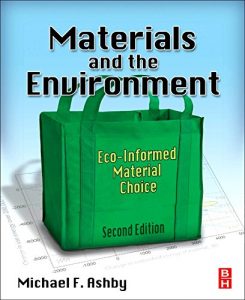Materials and the Environment: Eco-Informed Material Choice, Second Edition, explores human dependence on materials and its environmental consequences. It provides perspective, background, methods, and data for thinking about and designing with materials to minimize their environmental impact.
Organized into 15 chapters, the book looks at the history of our increasing dependence on materials and energy. It first explains where materials come from and how they are used in a variety of industries, along with their life cycle and their relationship to energy and carbon. It then examines controls and economic instruments that hinder the use of engineering materials, considers sustainability from a materials perspective, and highlights the importance of low-carbon power and material efficiency. It also discusses the mechanical, thermal, and electrical properties of engineering metals, polymers, ceramics, composites, and natural materials in relation to environmental issues. This book will help students of Engineering and Materials Science, as well as materials scientists or and engineers in analyzing and responding to environmental concerns.
- Introduces methods and tools for thinking about and designing with materials within the context of their role in products and the environmental consequences
- Contains numerous case studies showing how the methods discussed in the book can be applied to real-world situations
- Includes full-color data sheets for 40 of the most widely used materials, featuring such environmentally relevant information as their annual production and reserves, embodied energy and process energies, carbon footprints, and recycling data
New to this edition:
- New chapter of Case Studies of Eco-audits illustrating the rapid audit method
- New chapter on Materials for Low Carbon Power examines the consequences for materials supply of a major shift from fossil-fuel based power to power from renewables
- New chapter exploring Material Efficiency, or design and management for manufacture to provide the services we need with the least production of materials
- Recent news-clips from the world press that help place materials issues into a broader context.are incorporated into all chapters
- End-of-chapter exercises have been greatly expanded
- The datasheets of Chapter 15 have been updated and expanded to include natural and man-made fibers






